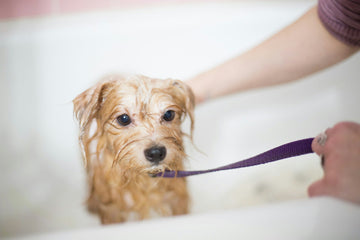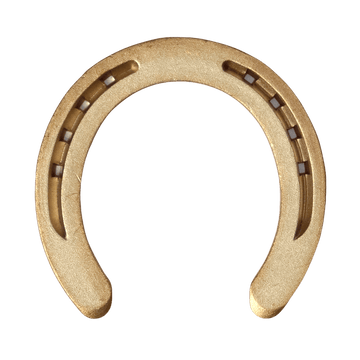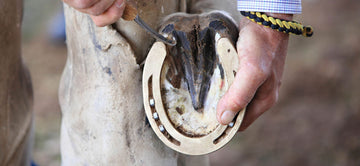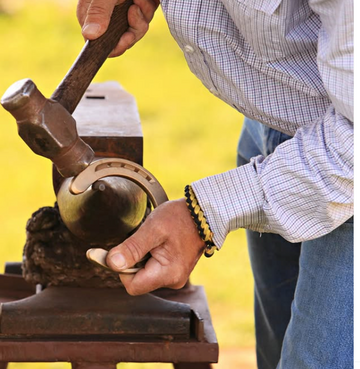Bathing a dog in a shower can be a quick, effective, and less messy alternative to using a bathtub.
However, it requires proper preparation, technique, and patience to ensure that your dog remains comfortable and stress-free throughout the process.
This guide provides step-by-step instructions on how to bathe your dog in the shower while keeping them calm and safe.
Preparing for the Bath
Gathering Essential Bathing Supplies
Before bringing your dog into the shower, make sure you have everything ready to avoid unnecessary stress.
-
Dog shampoos (selecting the right one is crucial for an effective bath; different types cater to various needs such as coat type, breed, and skin sensitivities).
-
Towels (one for drying and one for placing on the floor).
-
A brush for pre-bathing to remove tangles and loose fur.
-
A cup or bowl for rinsing, or a handheld showerhead for easier water control.
-
Cotton balls (to keep water from entering your dog’s ears).
Brushing Your Dog’s Fur
-
Brushing removes loose hair, debris, and mats, making it easier to wash your dog.
-
For long-haired dogs, this step is essential to prevent tangling during the bath. Proper washing and brushing techniques are crucial for breeds with a long coat to prevent matting and maintain the health of the dog's coat.
-
Short-haired dogs may not need extensive brushing but benefit from a quick pass to remove dirt.
Protecting Your Dog’s Ears
-
Insert cotton balls into your dog’s ears to prevent water from entering, which can lead to infections. Preventing water from entering a dog's ears during bathing is crucial to avoid complications like ear infections.
-
Be gentle and don’t push the cotton too deep.
Using a Handheld Shower Head (If Available)
A detachable showerhead makes rinsing much easier and prevents excessive water pressure on your dog’s body.
Creating a Comfortable Environment
Preventing Slips and Falls
-
Place a non-slip mat or towel on the shower floor to prevent your dog from slipping and to help catch dog fur, preventing it from clogging the drain.
-
Ensure the bathroom door is closed to retain warmth and prevent your dog from escaping mid-bath.
Adjusting Lukewarm Water Temperature
-
Always use lukewarm water—hot water can burn your dog’s skin, while cold water can cause stress.
Keeping the Atmosphere Calm
-
Use a soft voice to reassure your dog.
-
Keep the shower area well-ventilated to prevent moisture buildup.
Bathing Your Dog
Wetting the Coat
-
Start by wetting your dog’s body first, avoiding the face. Ensure you thoroughly rinse the dog's body, addressing all areas including the underside and sensitive spots, to ensure a complete wash and prevent irritation from leftover soap.
-
Use a cup or handheld showerhead to wet the fur from the neck down.
-
Avoid getting water in the eyes, ears, or nose.
Applying Dog Shampoo
-
Choose a dog-specific shampoo that nourishes the skin and coat. A dog's skin is more sensitive compared to humans, so using dog-friendly shampoo helps avoid irritation and prevents issues like dryness and itching.
-
Apply shampoo from the neck down, working it toward the tail.
-
Use gentle, massaging motions to help the shampoo penetrate the fur and relax your dog.
-
If your dog has long hair, work the shampoo into the coat in sections to avoid tangles.
Cleaning the Face and Muzzle
-
Never pour water directly over the face—use a damp washcloth instead to avoid getting soap in the dog's eyes. Carefully clean around the dog's eyes by gently wiping with a soft cloth, ensuring the soap does not come into contact with this sensitive area.
-
Gently wipe around the eyes, nose, and mouth with a soft cloth.
Rinsing and Drying
Rinsing Out Shampoo
-
Thoroughly rinse the coat using lukewarm water.
-
Ensure no shampoo residue is left behind by thoroughly rinsing the shampoo from the dog's fur, as it can cause skin irritation.
-
Pay extra attention to rinsing potty areas, stomach, and legs.
Encouraging Your Dog to Shake Off Water
-
Let your dog shake off excess water—this helps remove a lot of moisture before drying.
Drying Your Dog’s Coat
-
Use a large towel to gently squeeze and absorb water from the coat.
-
Start at the back and work your way down to the legs, ears, and tail.
-
If needed, use a dog-safe blow dryer that emits room temperature air on a low setting, keeping it at least 12 inches away from the skin to avoid burning or overheating.
Safety Precautions
Avoiding Water in the Ears and Eyes
-
Water in the ears can cause infections, so be extra cautious when rinsing the head.
-
Always use a damp washcloth to gently wipe the dog's face, especially around the eyes and muzzle, to ensure thorough cleaning without irritation.
Using a Hair Dryer Safely
-
If using a dryer, keep it on a low heat setting and constantly move it around to prevent overheating the skin.
Wearing the Right Clothing
-
Expect to get wet during the process, so wear clothes you don’t mind getting damp—a bathing suit or old T-shirt works well.
Desensitizing Your Dog to Bath Time
Making Bath Time Positive
-
Use treats and praise to encourage cooperation.
-
Consider using a lick mat with peanut butter or yogurt to keep your dog occupied.
-
Keep the bath short and stress-free, gradually increasing time as your dog gets comfortable.
Gradual Exposure to the Shower
-
Introduce your dog to the shower area without water first to help them feel safe.
-
Run the water on a low setting before introducing them to it.
-
Allow them to explore the space freely before starting the bath.
Tips for a Stress-Free Experience
-
Choose the right shampoo – Avoid products with harsh chemicals and opt for moisturizing formulas that nourish the skin.
-
Be patient – Some dogs take time to get used to baths; gentle handling is key.
-
Keep the bath time short – Especially for dogs who dislike water, a quick and efficient bath is best.
-
Reward good behavior – Praise and treats go a long way in making bath time a positive experience.
After the Bath
Ensuring a Comfortable Post-Bath Experience
-
Brush the coat after drying to prevent tangles, especially for long-haired breeds.
-
Provide a cozy and warm space where your dog can relax after the bath.
-
Consider using a calming aid, such as a pheromone diffuser, if your dog tends to get anxious.
Frequently Asked Questions
Is it OK to wash your dog in the shower?
Yes! Showering your dog is a great alternative to using a bathtub. It provides better water control and easier cleanup.
How do you bathe your dog in a shower?
-
Use lukewarm water, wet the fur, and lather with dog-friendly shampoo.
-
Avoid the eyes and ears.
-
Rinse thoroughly and dry using towels or a low-heat blow dryer.
-
The frequency of bathing a dog varies based on the dog's breed. Different breeds may require different grooming needs. A walk-in shower is particularly suitable for washing dogs, as it offers features that support comfort and safety during the bathing process.
What not to do when showering a dog?
-
Do not use human shampoo, as it can dry out their skin.
-
Do not pour water directly on the face—use a damp cloth instead.
-
Do not leave shampoo residue—always rinse thoroughly.
-
Do not neglect the drying process—let your dog shake off excess water, gently towel dry, and use dryers specifically designed for pets to avoid heat damage. This is especially important for long-haired breeds to prevent matting.
How do you bathe an unwilling dog?
-
Use positive reinforcement (treats, toys, and praise).
-
Make gradual introductions to water.
-
Keep baths short and calm.
-
Use a non-slip mat for security.
How to Bathe a Dog in a Shower Conclusion
Bathing your dog in a shower is an effective and efficient way to keep them clean and healthy.
By creating a stress-free experience, using the right techniques, and making bath time enjoyable, you can help your dog stay comfortable and relaxed during the process.
With patience and positive reinforcement, bath time can become an enjoyable bonding experience for you and your furry companion!












